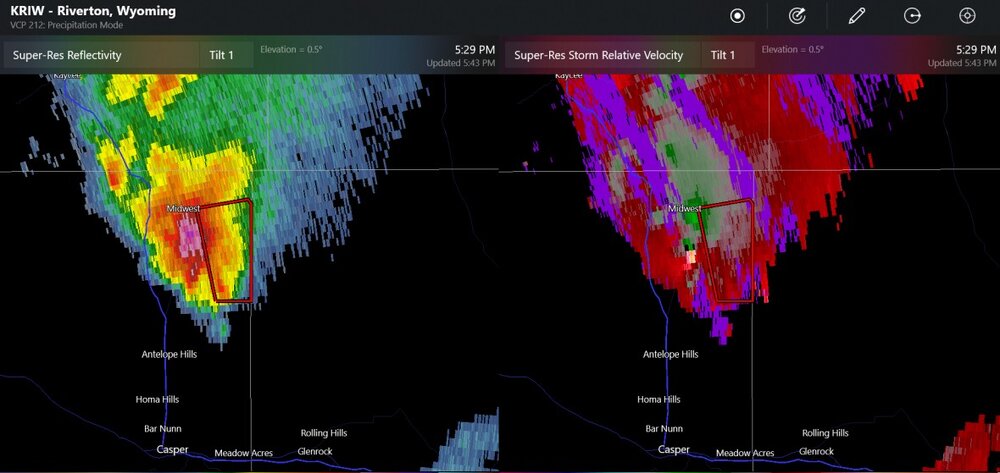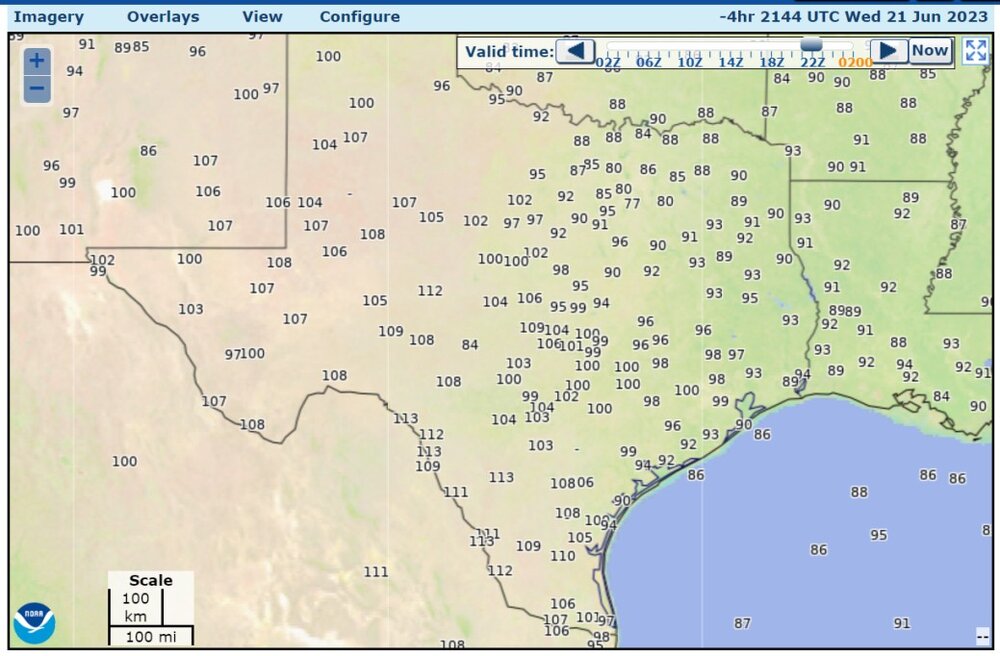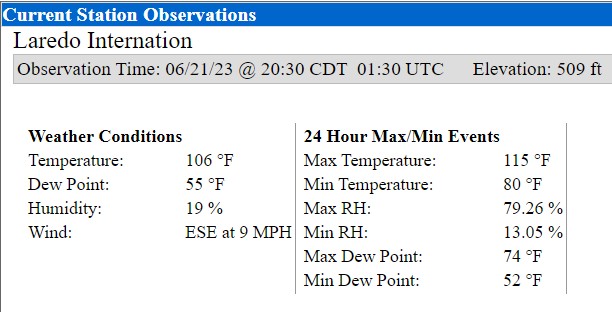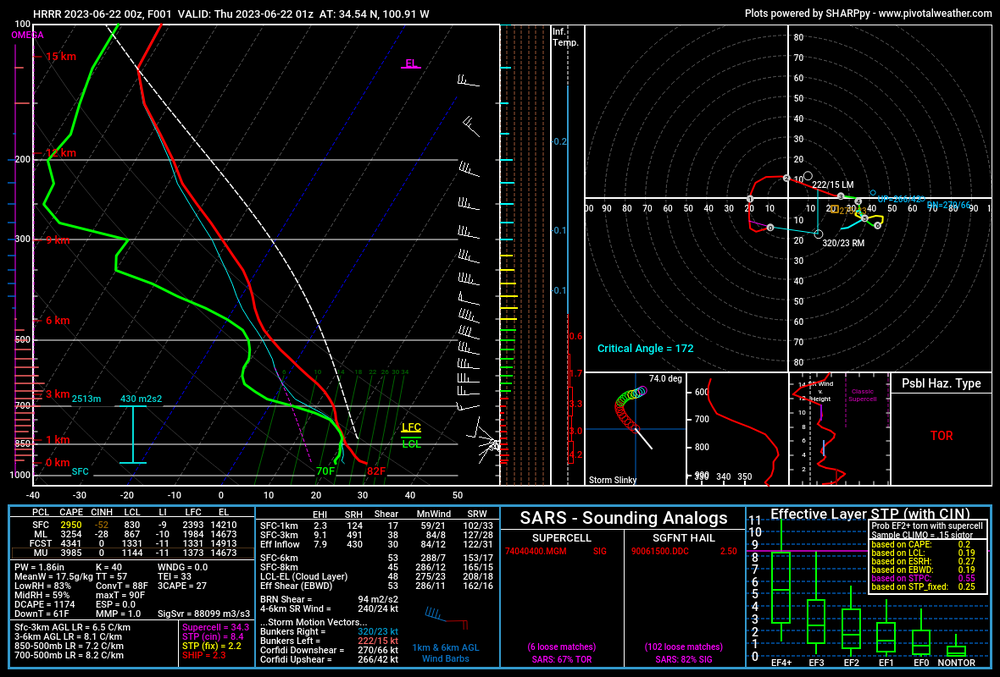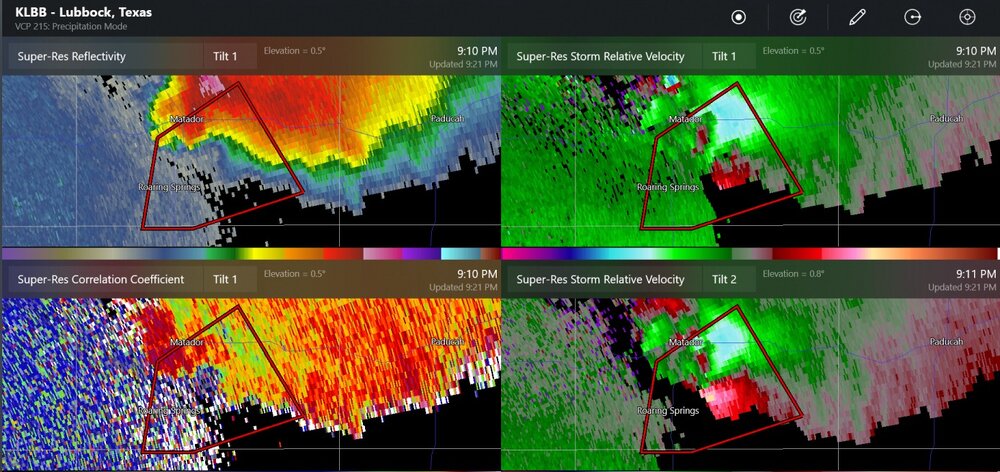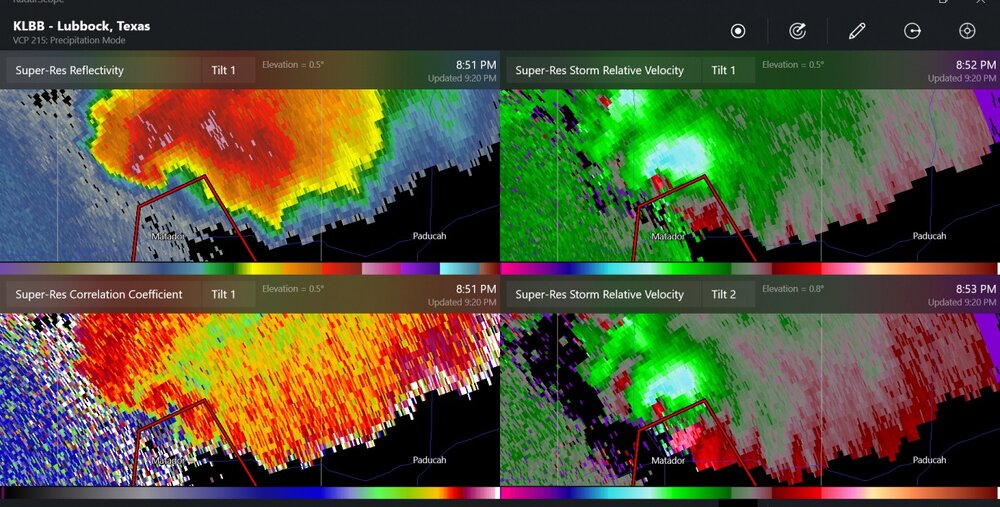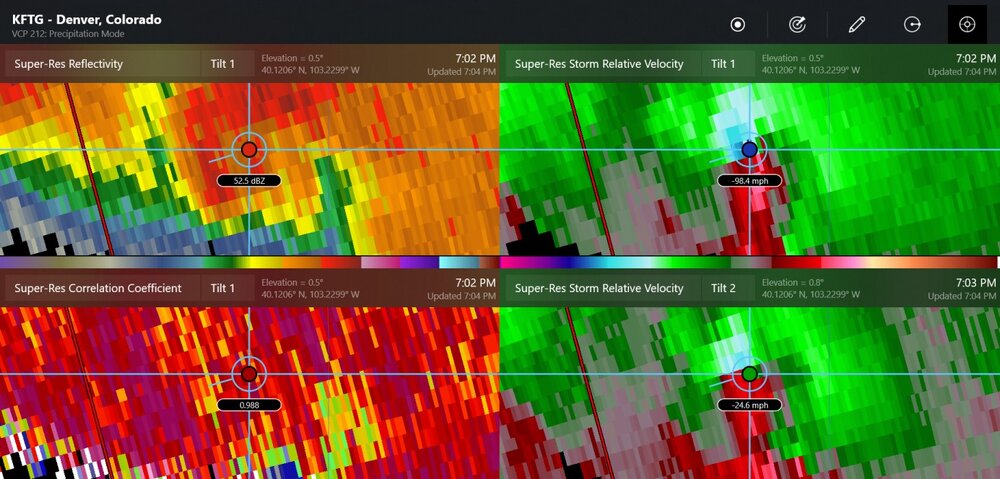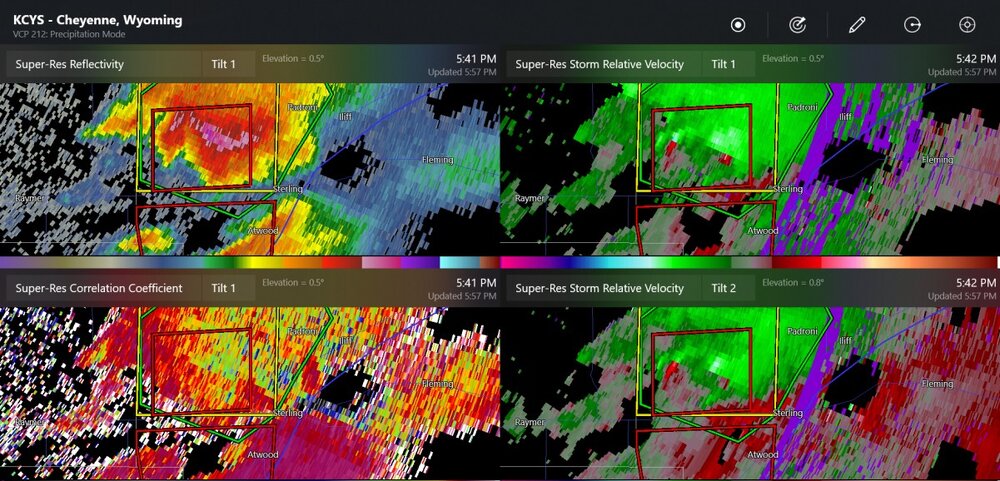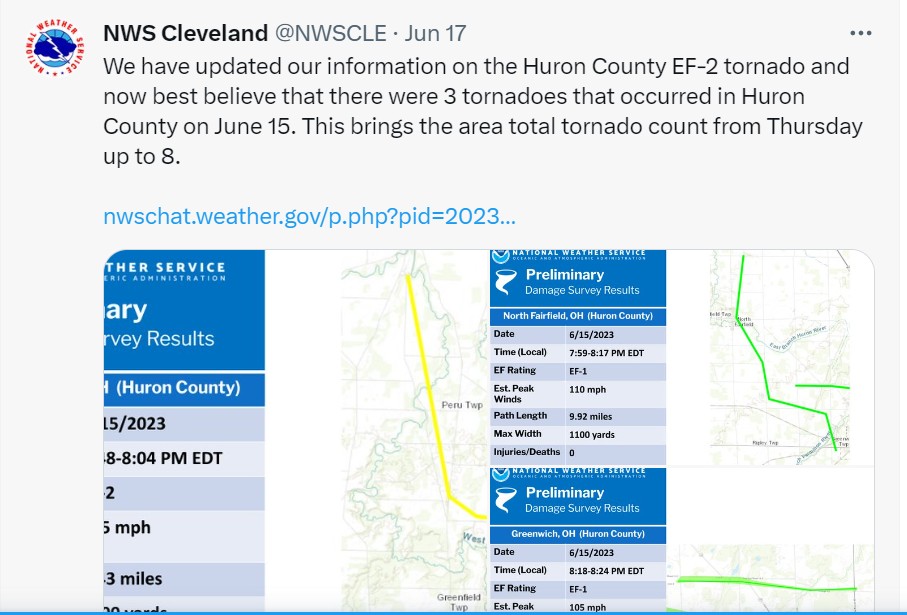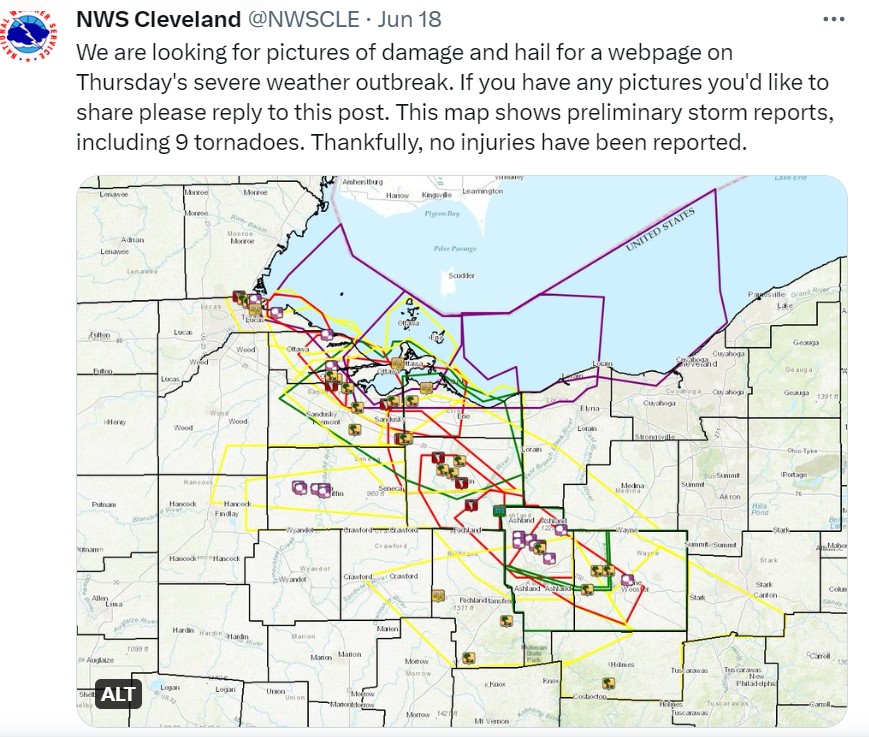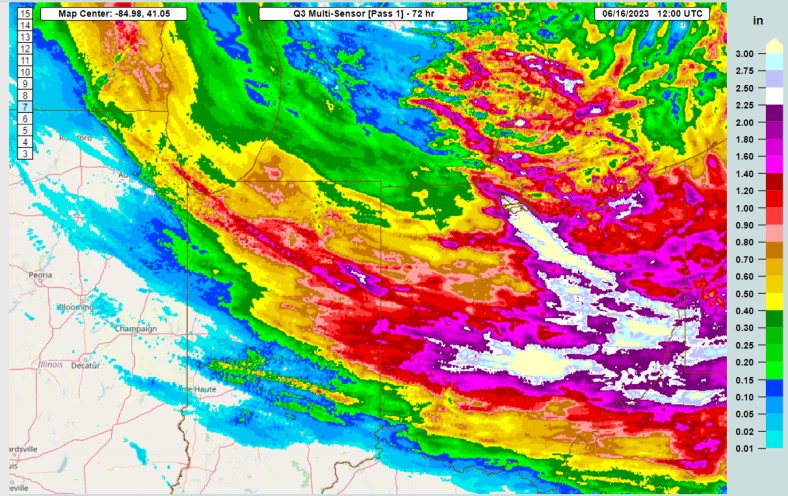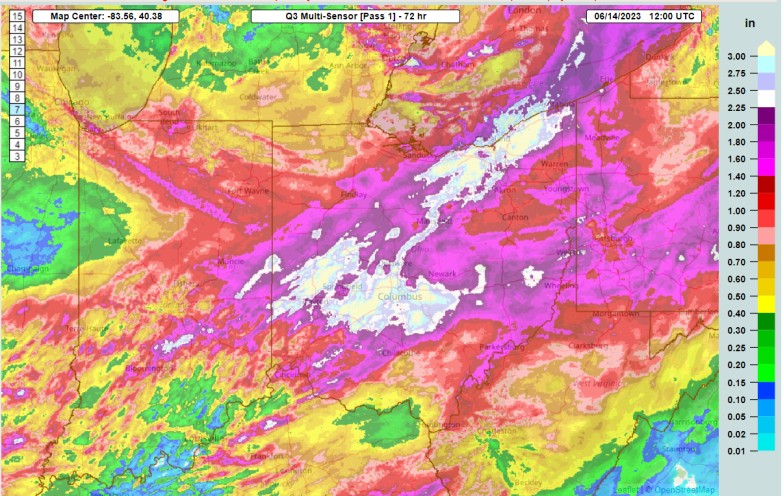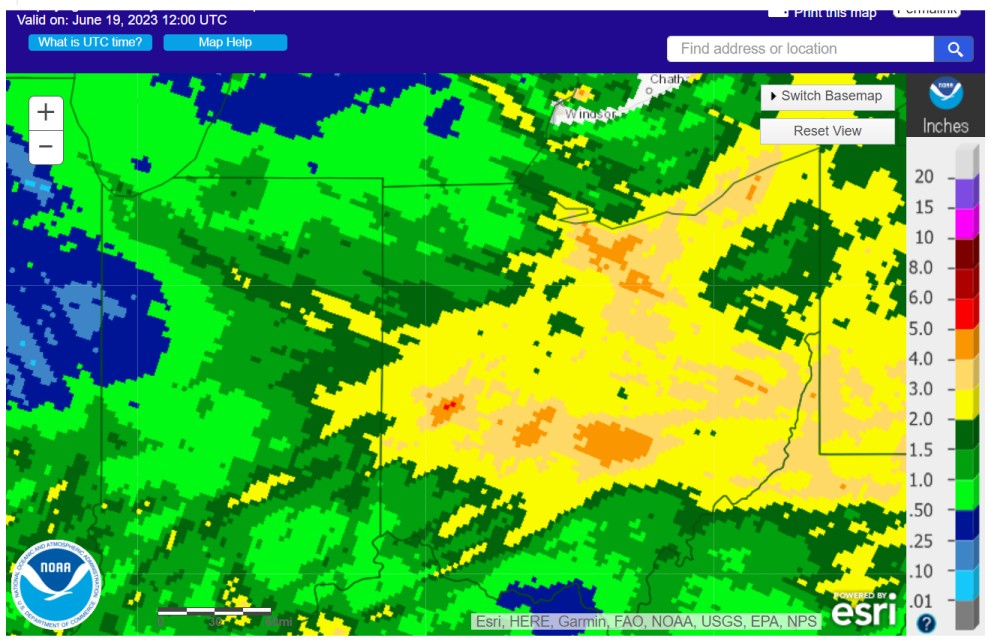-
Posts
10,552 -
Joined
-
Last visited
Content Type
Profiles
Blogs
Forums
American Weather
Media Demo
Store
Gallery
Everything posted by Chinook
-
-
-
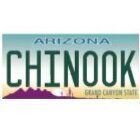
2023 Short/Medium Range Severe Weather Discussion
Chinook replied to Chicago Storm's topic in Lakes/Ohio Valley
It seems like the HRRR was a little too excited today. Still, there was 3000-4000 J/kg to work with. I wonder what will get going tomorrow. The new runs will be coming out soon. I wonder if I'll finally have some storms to track within a few miles of me. Will the HRRR runs be too excited about severe storms tomorrow? -
If I remember correctly, Twister the movie never showed the correct supercell structure like wall clouds, or clear slot, rear flank downdraft shelf, etc.
-
Didn't 6 tornadoes occur in the movie Twister? Hmm. Oh well, the reality is these guys had a chase of a lifetime.
-
I always wished to be able to do this- take a pic of a great storm cell from a jet. I haven't flown across the country in the spring/summer very much. I did see a MCS/anvil with a storm one time, from about 10 miles+, in a jet.
-

2023 Short/Medium Range Severe Weather Discussion
Chinook replied to Chicago Storm's topic in Lakes/Ohio Valley
There are some grunge thunderstorms starting in Iowa, with maybe a couple of severe warnings in the next hour, maybe some 1" hail. It probably could get a lot worse with 50 kt of shear, later. SPC mesoanalysis says significant tornado parameter will be >1 this evening. -

2023 Short/Medium Range Severe Weather Discussion
Chinook replied to Chicago Storm's topic in Lakes/Ohio Valley
-
I think this is it. I'm watching Brandon Copic (storm chaser) being broadcast by Reed Timmer's youtube. May have already been a complicated situation with multiple, perhaps, short lived tornadoes
-
-
Hawk Springs Wyoming, possible large tornado has tracked east of Chugwater to near Hawk Springs and hail up to 2.25"
-
Once again, I must say that this just nuts. For the entire time I've been watching weather since 2002, drought flops back and forth between the Southeast and the western half of the country. This year, there seems to be undeniable tendency for the atmosphere to stop the rain over central Midwest over to NW Ohio and Michigan. Today was kind of rainy...
-
this tornado was teported north of Casper at 5:30 eastern (as seen above) - a long way from the Riverton radar but still the radar picks up a lot of detail. The rotation went over I-25 south of Midwest
-
that's a lot. New severe warning for Denver, hail is likely to be in downtown pretty soon
-

Texas/Oklahoma 2023 Obs and Discussion
Chinook replied to Ed, snow and hurricane fan's topic in Central/Western States
Maximum temperatures of 105 to 115 the Rio Grande will make this a memorable and dangerously hot day. (but I'm not sure if it is within a couple degrees of all time records) -
HRRR proximity sounding near the cell near Lubbock shows incredibly large SCP, STP, precipitable water
-
Hail in northeast Denver, also Coal Creek in the mountains
-
-
I made one post about that in Mountain West. Either that or it was a double tornado that I did not see on radar!
-
-
There have been 2-4 confirmed tornadoes near Padroni/Atwood?Merino in Northeast Colorado. It's possible that this radar image shows a double tornado situation, but the CC image does not really show the debris. SPC mesoanalysis shows an almost-impossible 5000 J/kg
-
I vote this as best mothership of all time
-
-
golf ball hail has some serious downward speed yeah, least thundery spring probably in history here June 11-14 and then, overlapping by 1 day, June 13-16, precip by MRMS/multisensor. Some of Ohio and Indiana had some nice drought-busting rains of over 2"-3". My place had light rain during last week, but some relief. At least the rain could soak in with temps of 50-70 for quite a number of hours last week. June 5-19 (14 day) precip
-

2023 Atlantic Hurricane season
Chinook replied to Stormchaserchuck1's topic in Tropical Headquarters
Bringing this back to seasonal-level discussion. The recent (June 6) CSU forecast has 15 Named Storms, 7 Hurricanes, 2 Major Hurricanes. The asterisk here is that it includes the unnamed storm that already happened 6 months ago in January . So including these specific numbers, it's really normal, also the ACE is really normal. So I guess the negative features of El Nino will be maybe fighting against some positive features, like the stronger African monsoon. For all you New England persons out there, Phil Klotzbach used to have a team picture of the 2004 Red Sox in his office when he was at CSU's campus.


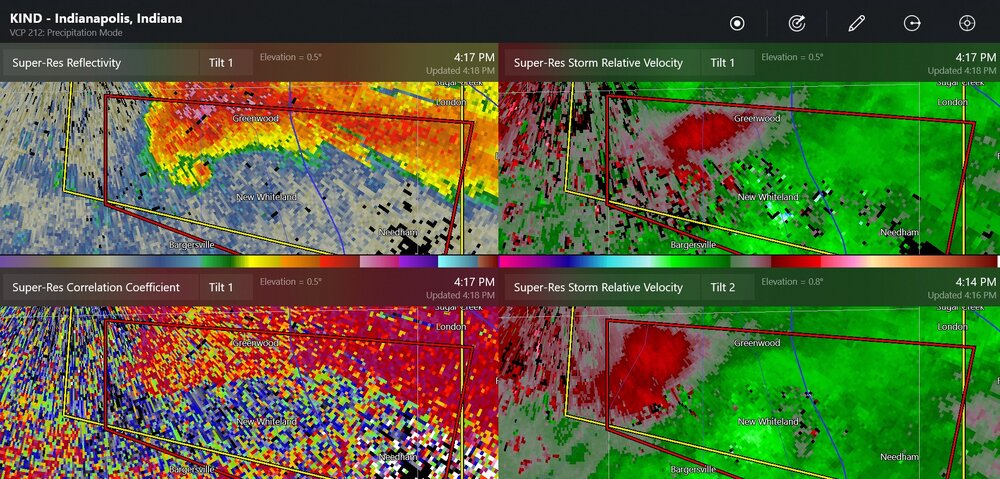
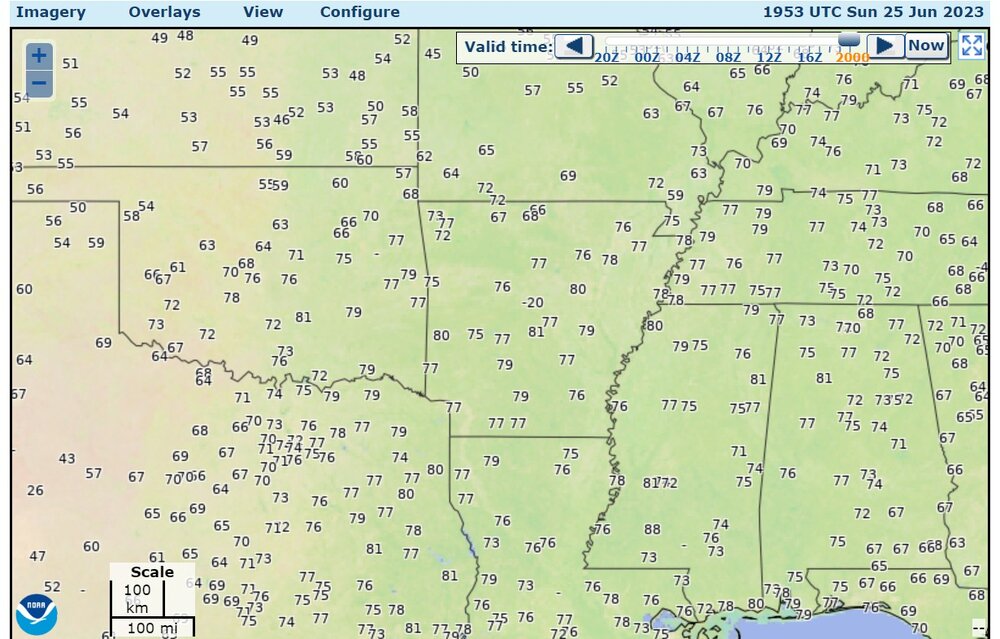
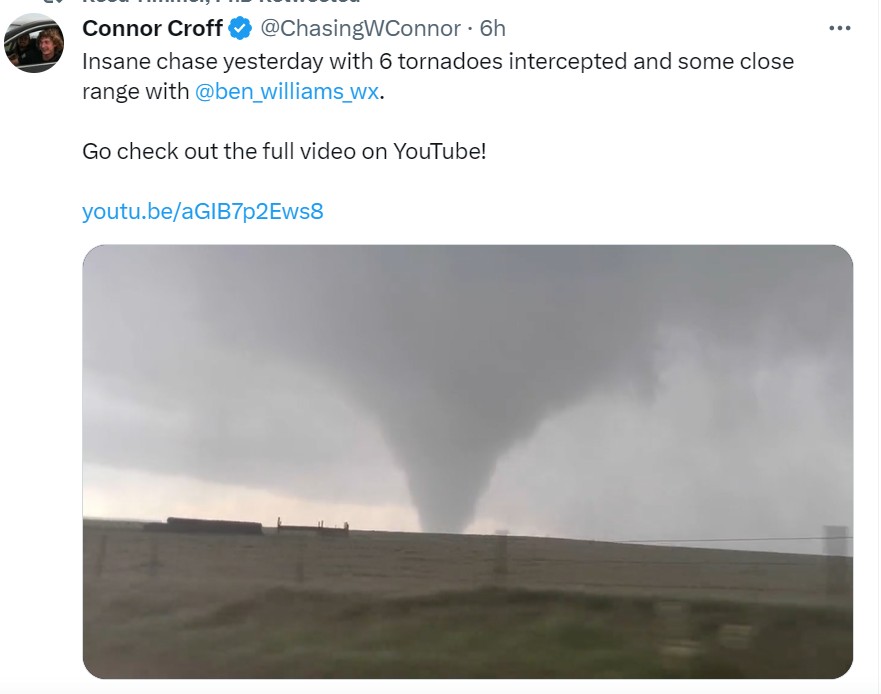

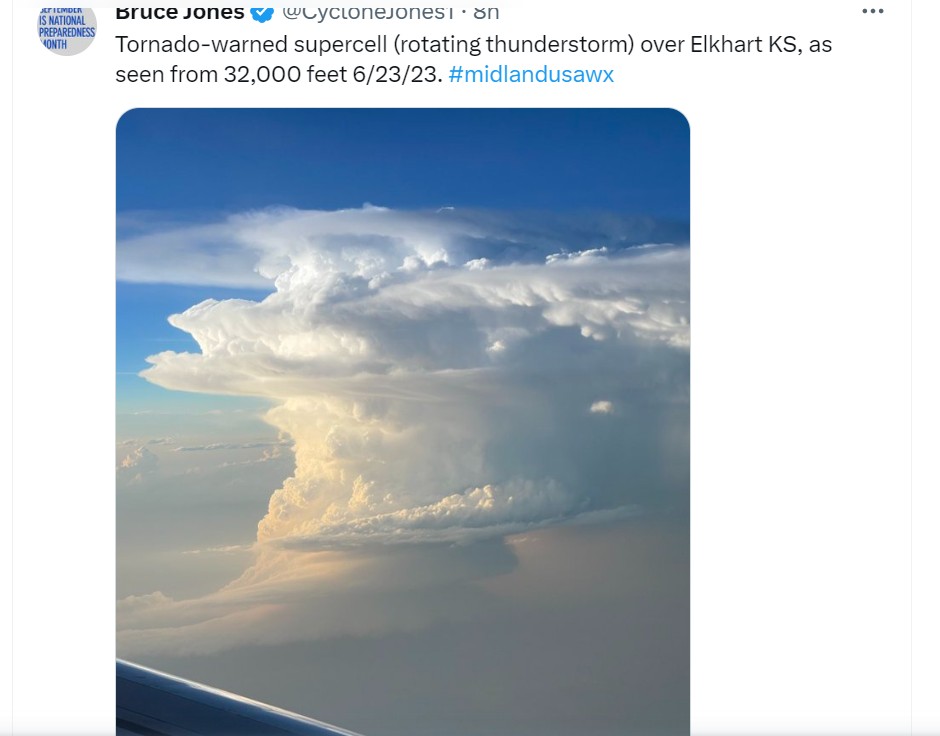
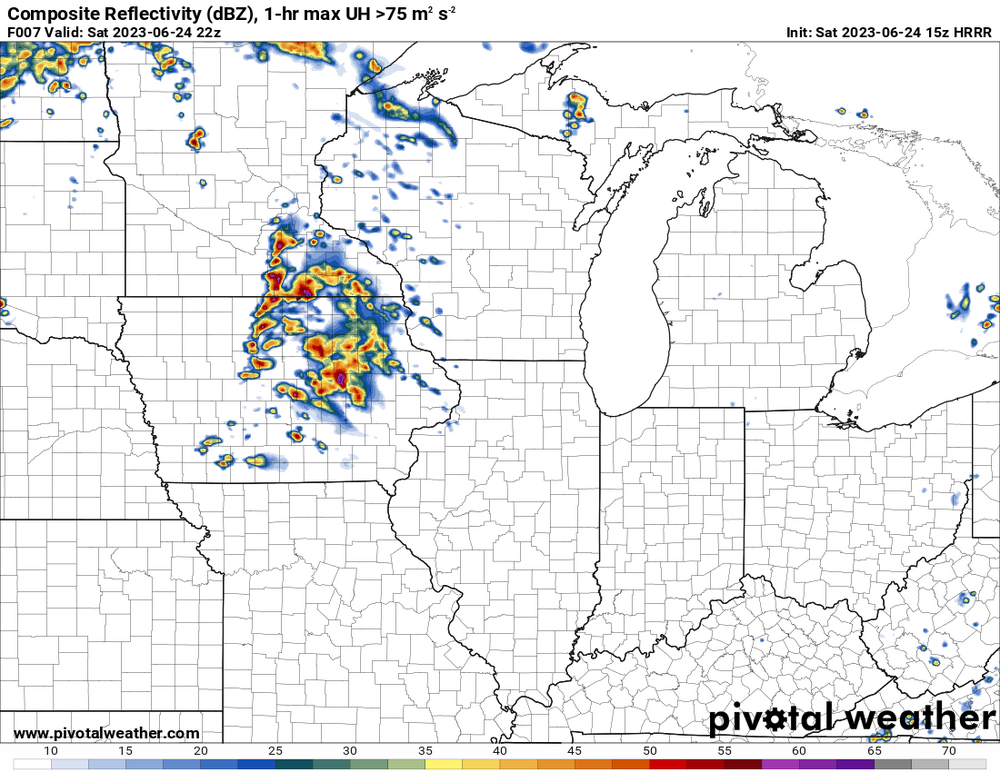
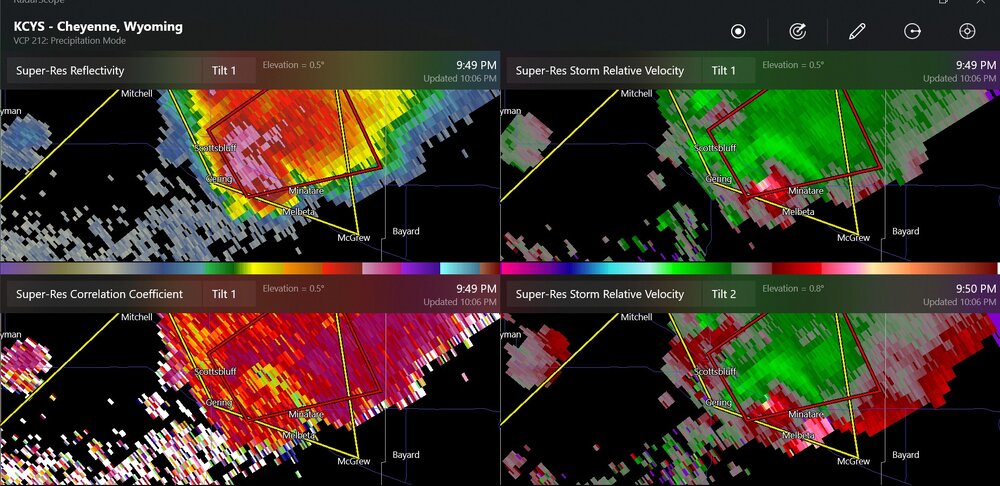
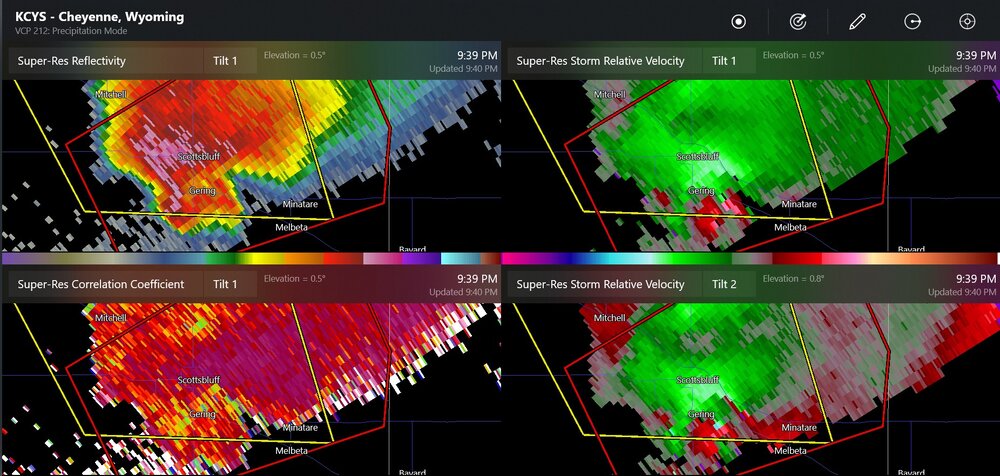
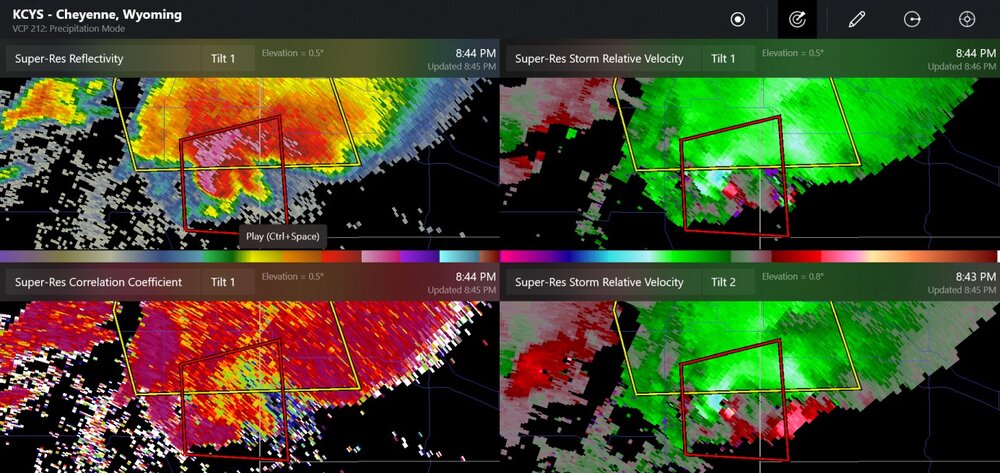
.thumb.png.6f485d1143619dc24a88fbfe8132d5b7.png)
